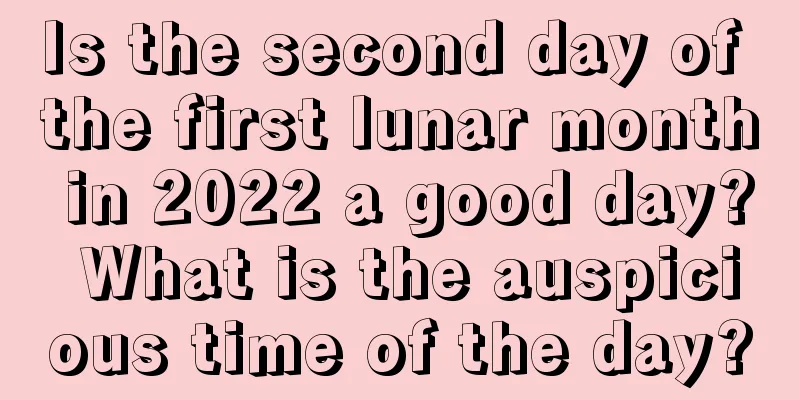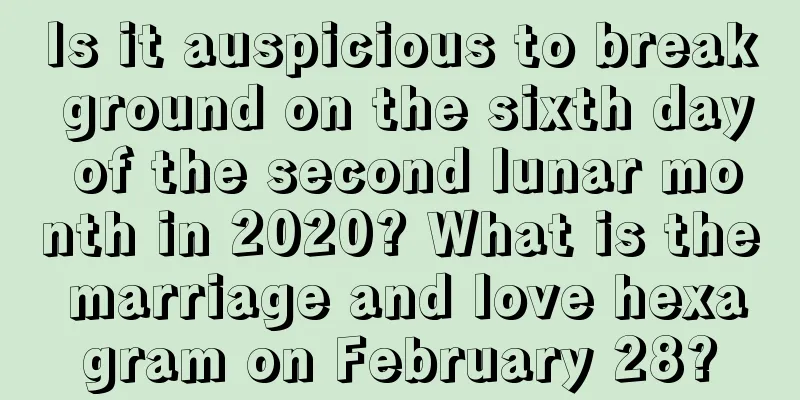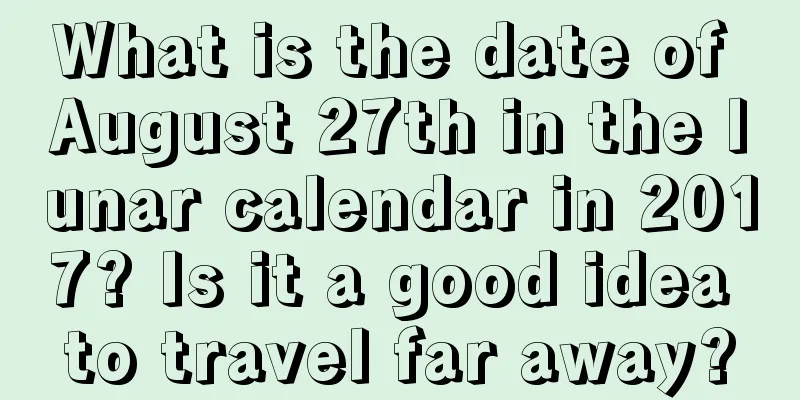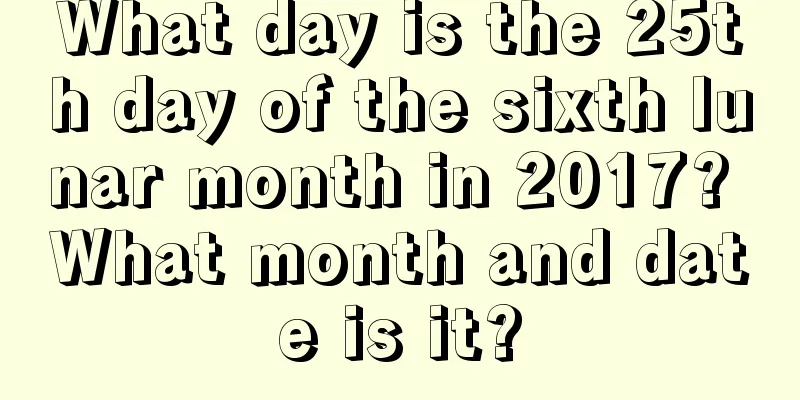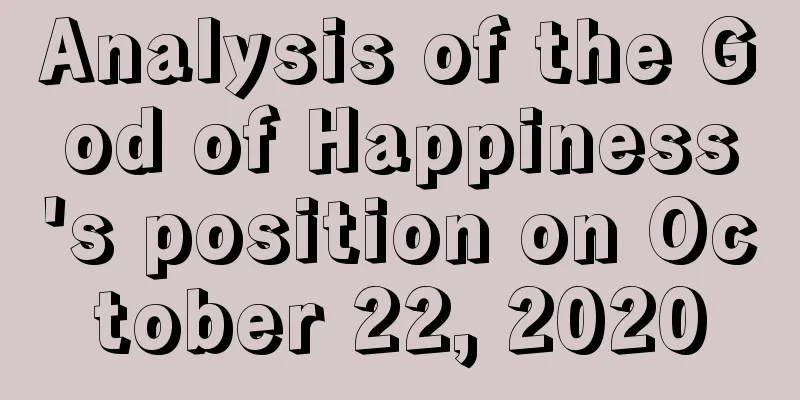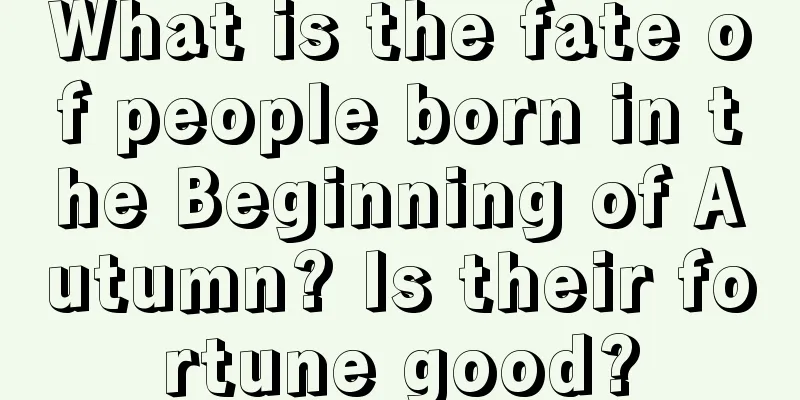What are the customs of Mid-Autumn Festival? Which solar term does the Mid-Autumn Festival fall on?
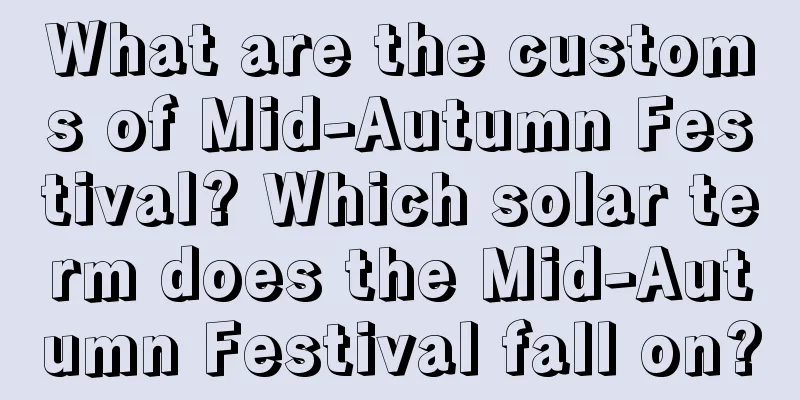
What are the customs of Mid-Autumn Festival? Which solar term does the Mid-Autumn Festival fall on? Mid-Autumn Festival is a big day that symbolizes family reunion. On this day, those who are away from home should try their best to return home for reunion. The arrival of the eighth month of the lunar calendar also means that the summer heat has dissipated and autumn has truly arrived. So what should we pay attention to in the eighth month of the lunar calendar in 2019? Come to Mr. Shui Mo's website to learn more related content.What are the customs of Mid-Autumn Festival?Moon Festival:"Autumn evening moon" was recorded in "Book of Rites" as early as now, which means worshiping the moon god. At this time, people would welcome the cold and worship the moon, and set up incense tables. In the Zhou Dynasty, the Mid-Autumn Festival was celebrated every year with the welcoming of the cold and the worship of the moon. A large incense table is set up, and offerings such as moon cakes, watermelons, apples, red dates, plums, grapes, etc. are placed on it. Moon cakes and watermelons are absolutely indispensable, and the watermelon must be cut into a lotus shape. Under the moon, the statue of the moon god is placed in the direction of the moon, red candles are lit, and the whole family worships the moon in turn. Then the reunion moon cakes are cut by the housewife. The person who cuts the cake should calculate in advance the total number of people in the family, including those at home and those away. The cake should not be cut too much or too little, and all should be of the same size. The custom of worshiping the moon is also popular among ethnic minorities. Moon Appreciation: According to legend, Wuyan, an ugly girl in ancient Qi State, worshipped the moon devoutly when she was young. When she grew up, she entered the palace with her outstanding character, but was not favored. On the fifteenth day of the eighth month of a certain year, the emperor saw her under the moonlight and thought she was exceptionally beautiful. He later made her queen, and thus the Mid-Autumn Festival moon worship originated. Chang'e in the moon is famous for her beauty, so young girls worship the moon, wishing to "look like Chang'e and have a face as bright as the moon." The Dai people in Yunnan also have the custom of "moon worship" on Mid-Autumn Night. Moon Appreciation: The custom of appreciating the moon on Mid-Autumn Festival was very popular in the Tang Dynasty, and many famous poems by poets contain verses about the moon. By the Song Dynasty, the custom of appreciating the moon on Mid-Autumn Festival became more popular. On this day, "the rich families decorated their pavilions and terraces, while the common people vied to occupy restaurants to enjoy the moon." During the Ming and Qing dynasties, moon-worship and moon-appreciation activities among the court and the public were even more large-scale, and many ancient monuments such as "Moon-Worship Altars", "Moon-Worship Pavilions" and "Moon-Viewing Towers" still remain throughout China. The literati and scholars had a special fondness for moon-appreciating. They would either climb up towers to admire the moon or go boating to admire the moon, drink wine and compose poems, leaving behind many popular masterpieces that will last forever. Lighting Lanterns <br /> On the night of the Mid-Autumn Festival, there is a custom of lighting lanterns to enhance the moonlight. Nowadays, people in the Huguang area still have the custom of stacking tiles into a tower and lighting lanterns on the tower. In the Jiangnan area, there is a festival custom of making lantern boats. In modern times, the custom of lighting lanterns during the Mid-Autumn Festival has become more popular. In their article "Leisurely Talking about Seasonal Affairs", Zhou Yunjin and He Xiangfei, modern scholars, said: "The lantern-hanging is most popular in Guangdong. Ten days before the festival, each family will make lanterns with bamboo strips. They will make shapes of fruits, birds, beasts, fish, insects, and words such as 'Celebrate Mid-Autumn Festival', and then paste colored paper on them to paint various colors. On the night of Mid-Autumn Festival, candles are lit in the lanterns and tied to bamboo poles with ropes. The lanterns are erected high on the eaves or terraces. Or small lanterns are used to form words or various shapes and hung high up in the house, commonly known as 'Tree Mid-Autumn Festival' or 'Vertical Mid-Autumn Festival'. The lanterns hung by wealthy families can be several feet high, and the family members gather under the lanterns to drink and have fun. Ordinary people will erect a flagpole and two lanterns, also for their own fun. The whole city is full of lights, like a world of glass." It seems that the scale of the Mid-Autumn Festival lantern-lighting custom from ancient times to the present seems to be second only to the Lantern Festival. Eating mooncakes <br /> Appreciating the moon and eating mooncakes are essential customs for celebrating the Mid-Autumn Festival in various parts of China. As the saying goes, "On the 15th day of the eighth month, the moon is full and the mooncakes are fragrant and sweet." The word mooncake originated from Meng Lianglu by Wu Zimu in the Southern Song Dynasty. At that time, it was just a kind of snack food. Later, people gradually combined moon-watching with mooncakes, symbolizing family reunion and expressing longing. At the same time, mooncakes are also an important gift for friends to keep in touch during the Mid-Autumn Festival. Which solar term does the Mid-Autumn Festival fall on?The Mid-Autumn Festival is based on the lunar calendar, while the solar terms are based on the solar calendar. The times of the two are not on the same calendar and cannot be generalized. The Mid-Autumn Festival in 2019 is on September 13, which is after the White Dew solar term (September 8). The Mid-Autumn Festival, also known as Moon Festival, Autumn Festival, Mid-Autumn Festival, August Festival, August Meeting, Moon-Chasing Festival, Moon-Playing Festival, Moon-Worshiping Festival, Daughters' Festival or Reunion Festival, is a traditional cultural festival popular among many ethnic groups in China and countries in the Chinese character cultural circle. It falls on the 15th day of the eighth month in the lunar calendar. It is named so because it falls exactly in the middle of the three autumns. In some places, the Mid-Autumn Festival is set on August 16. The Mid-Autumn Festival began in the early Tang Dynasty, was popular in the Song Dynasty, and by the Ming and Qing Dynasties, it had become one of China's traditional festivals as famous as the Spring Festival.Fate determines one's entire life, while fortune determines one's current moment. In the method of fortune-telling based on the Eight Characters, the so-called fortune refers to the great fortune, which can be divided into forward and reverse fortune. Do you want to know when your good luck will come? Then take a look at the [ Excellent Calculation ] below, and may you have peace and happiness in your life! |
Recommend
What date is the twelfth day of the lunar year in 2022? Is the twelfth day of the lunar year an auspicious day for marriage?
The twelfth day of the first lunar month is the Ra...
Auspicious days for opening a business in August of the lunar calendar in 2020
The eighth month of the lunar calendar is also kno...
Moving into a new home - Is it auspicious to move into a new home on the 14th day of the first lunar month in 2020? Are there any taboos?
About moving into a new home: Feng Shui, day, and ...
Query the auspiciousness and inauspiciousness of the Grain Rain time on April 20, 2019, and historical records about the Grain Rain solar term!
Introduction: Every day has good and bad luck, and...
Is November 15th of the lunar calendar in 2020 an auspicious day for praying?
When it comes to praying, our instinct is to pray ...
How to find the direction of the God of Happiness on the tenth day of the fourth lunar month in 2017?
Introduction: The worship of the God of Joy is ver...
Can the contract be signed on the fourth day of the third lunar month in 2020? What does signing a contract mean?
Many friends hope to choose a good time when signi...
Is it a good idea to open a business during the Qingming Festival in 2018? What should we pay attention to?
In order to have a good start on the first day of ...
Is September 16th of the lunar calendar 2019 a good day to get a haircut?
The ninth month of the lunar calendar is also know...
What festival is the fifteenth day of the first lunar month and what customs are there?
The Spring Festival is a festival for all Chinese ...
Is it possible to renovate on the fourth day of the twelfth lunar month in 2021? What should I pay attention to?
In the eyes of Chinese people, an auspicious day m...
What are the do's and don'ts during the Lantern Festival? Who can’t eat Tangyuan?
Introduction: Glutinous Rice Balls are a tradition...
2019 Lunar New Year 30th Lunar Month Auspicious Hours and Inauspicious Hours
The arrival of the first month of the lunar calen...
Query the lucky god's position during the Rain Water solar term in 2019, and enjoy ancient poems about the Rain Water solar term
During the Rain Water solar term, the temperature ...
Is it a good time to open on April 19, 2020, Guyu? Analysis of the process of worshiping Cangjie during the Guyu solar term!
Introduction: It is very important to choose an au...

